View basket (0 items $0.00)
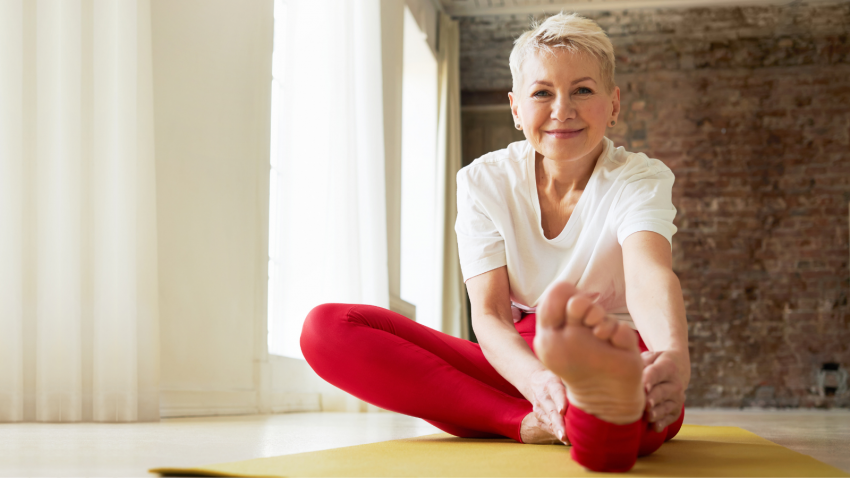
6 Reasons to Practice Yoga to Relieve Arthritis Pain
“I hurt all the time,” said one of my students. “But after yoga class, I feel so much better.” This is a typical response from my students with arthritis. Does this surprise you? While arthritis is a painful, inflammatory condition affecting joints, movement is a key to arthritis management. In fact, the American College of Rheumatology identifies physical activity as an essential part of the effective treatment of the most common types of arthritis, namely osteoarthritis (OA) and rheumatoid arthritis (RA). So practicing yoga to relieve arthritis pain is a valuable tool in your arsenal.
While there are many kinds of physical activities in which arthritis sufferers can engage, yoga is a safe, gentle, and effective way to increase physical activity. Numerous studies confirm that in addition to lessening pain and improving function and mobility, yoga provides important psychological benefits.
6 Reasons to Practice Yoga to Relieve Arthritis Pain
1. Improve Flexibility and Range of Motion (ROM)
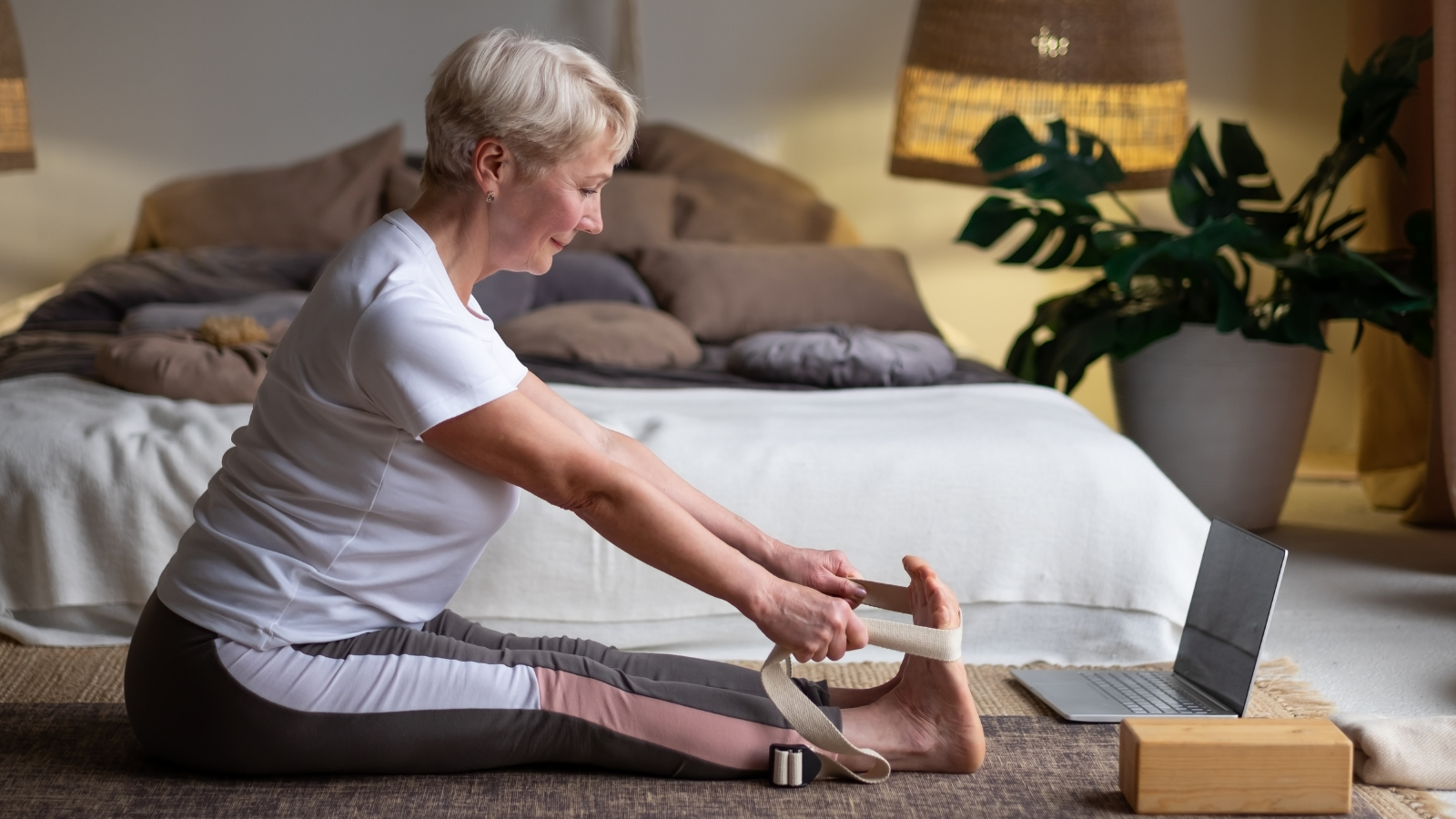
Loss of coordination and muscle strength frequently accompany a limited range of motion (ROM). Part of the reason for this is that when muscles aren’t used they become weak and stiff. Over time underutilized muscles begin to atrophy, leading to even greater motion limitations. By contrast, increasing ROM and flexibility helps to lessen body aches and joint pains by decreasing the tension in joints, muscles, and surrounding tissues. A well-rounded yoga practice to relieve arthritis pain helps maintain muscle strength and flexibility by moving the joints through their natural range of motion.
2. Enhance Respiratory Endurance and Overall Energy Levels

Moving your joints is one of the strongest stimuli to breathing properly. Small movement receptors inside of our joints send signals to the part of our brain that regulates breathing. The more we move, the better we breathe. Not only that, but better breathing leads to more mental alertness, a more positive outlook, and an increased ability to manage everyday stress. Simply stated, when you breathe more freely you have more energy and enjoy life more. Yoga’s strong emphasis on breathing helps keep the respiratory muscles active and supple.
3. Improve Balance and Posture and Relieve Arthritis Pain
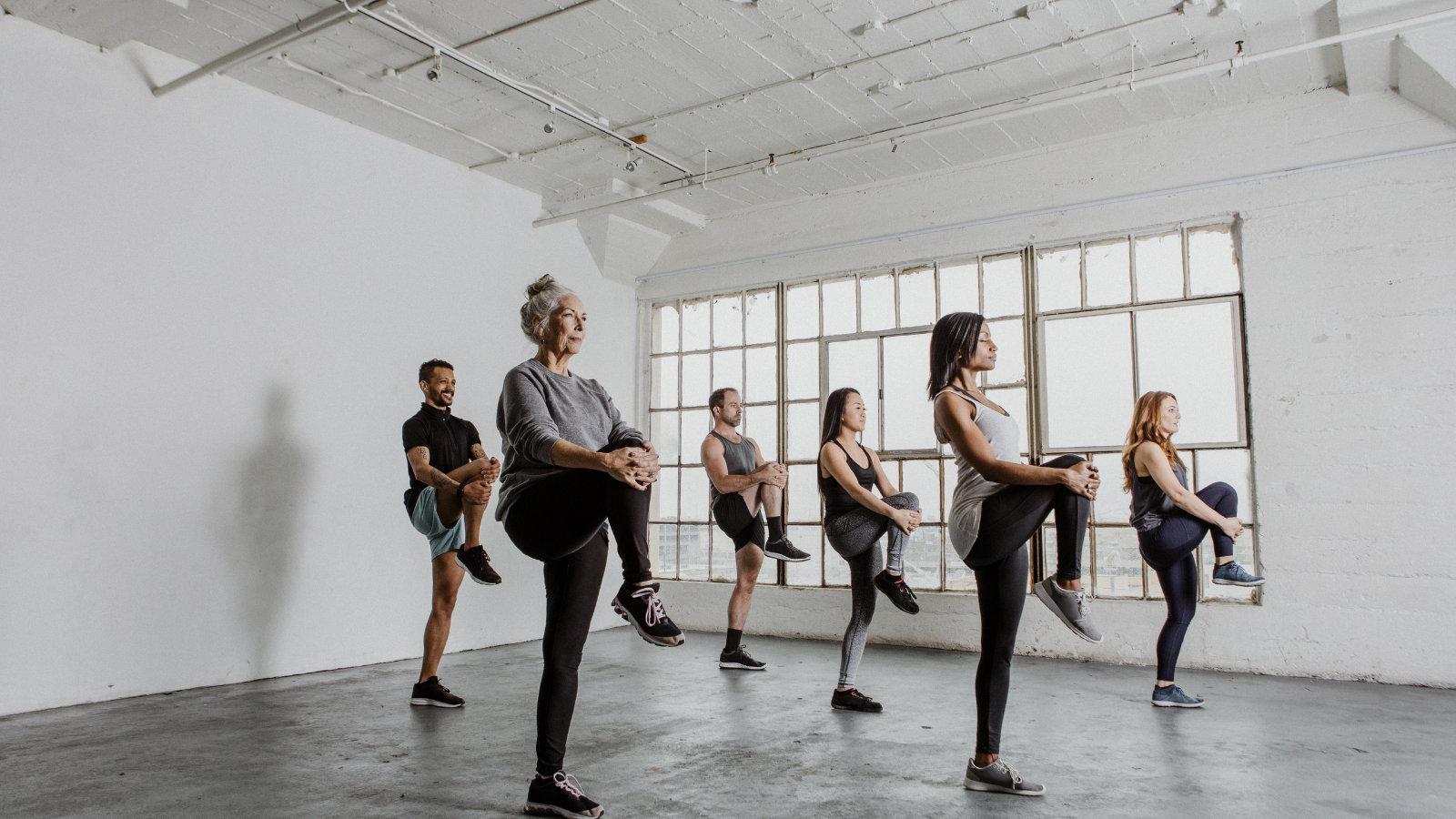
One of the biggest fears for people with arthritis in their back, hips, and feet is the fear of falling. As a result, people tend to limit their movement to what feels “safe.” By practicing yoga balancing poses, such as Tree Pose (Vrksasana), you can learn how to compensate and right yourself when thrown off balance. Balance practice also helps to build confidence and reduce the fear of falling.
The second consequence of limited movement is the loss of coordination and muscle strength. Lack of muscle strength also contributes to poor posture. As we age, it’s not uncommon to develop a rounded posture and shuffling walk. To counteract this tendency, increasing body awareness and strengthening the muscles that support the spine can help. Many yoga poses such as Mountain Pose (Tadasana), encourage the elongation of the spine as well as keener body awareness.
4. Decrease Joint Pain
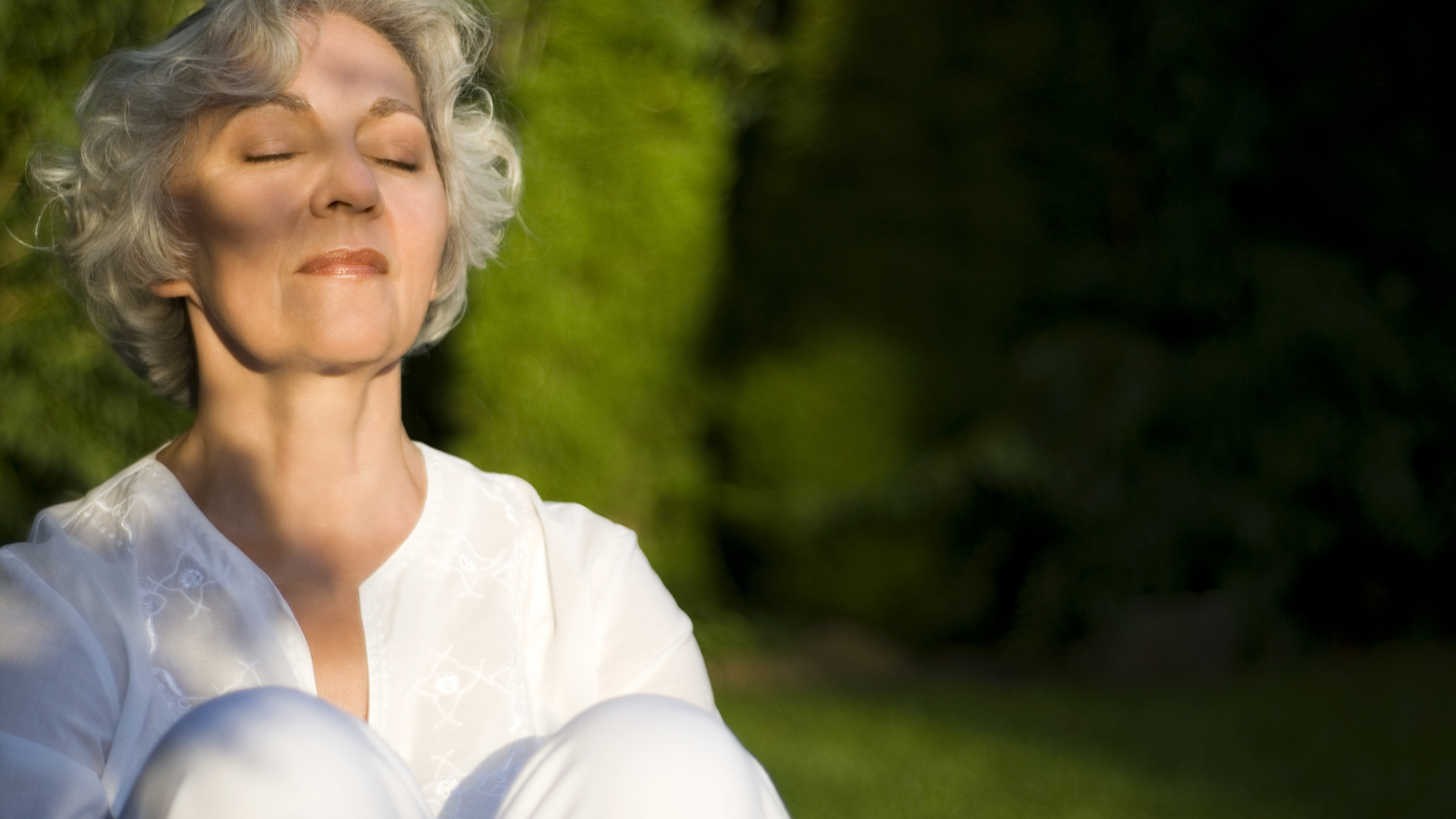
Scientists and doctors know that cognitive and emotional factors influence our perception of pain. Yogic practices such as meditation and deep breathing provide tools for not only coping with chronic arthritic pain but also can ease it. Meditation appears to change the wiring of the brain, increasing the activation of the prefrontal cortex.
Activation of the prefrontal cortex has been associated with greater levels of happiness and equanimity. There is also evidence that meditation can reduce the transmission of pain signals from the thalamus, a major relay center in the brain, to the higher brain centers, where pain signals are interpreted.
Additionally, breathing practices that extend or lengthen your exhalations trigger the parasympathetic nervous system. This part of our nervous system is responsible for our body’s ability to recuperate and return to a balanced state after experiencing pain or stress. Longer exhalations calm our nervous system and signal to the brain that we are safe.
5. Reduce Anxiety, Depression, and Stress

Living with a chronic pain condition like arthritis can lead to depressive symptoms. Yoga teaches self-soothing techniques, such as calming breathing practices and conscious muscle relaxation, which can lessen anxiety and stress. By studying yoga philosophy, people with arthritis develop the ability to accept difficulties and react more calmly to stressful or painful situations. Cultivating equanimity, or a steady and quiet mind opens the door to greater contentment with life as it is. Further, we learn to accept that circumstances are always shifting and changing.
6. Safety
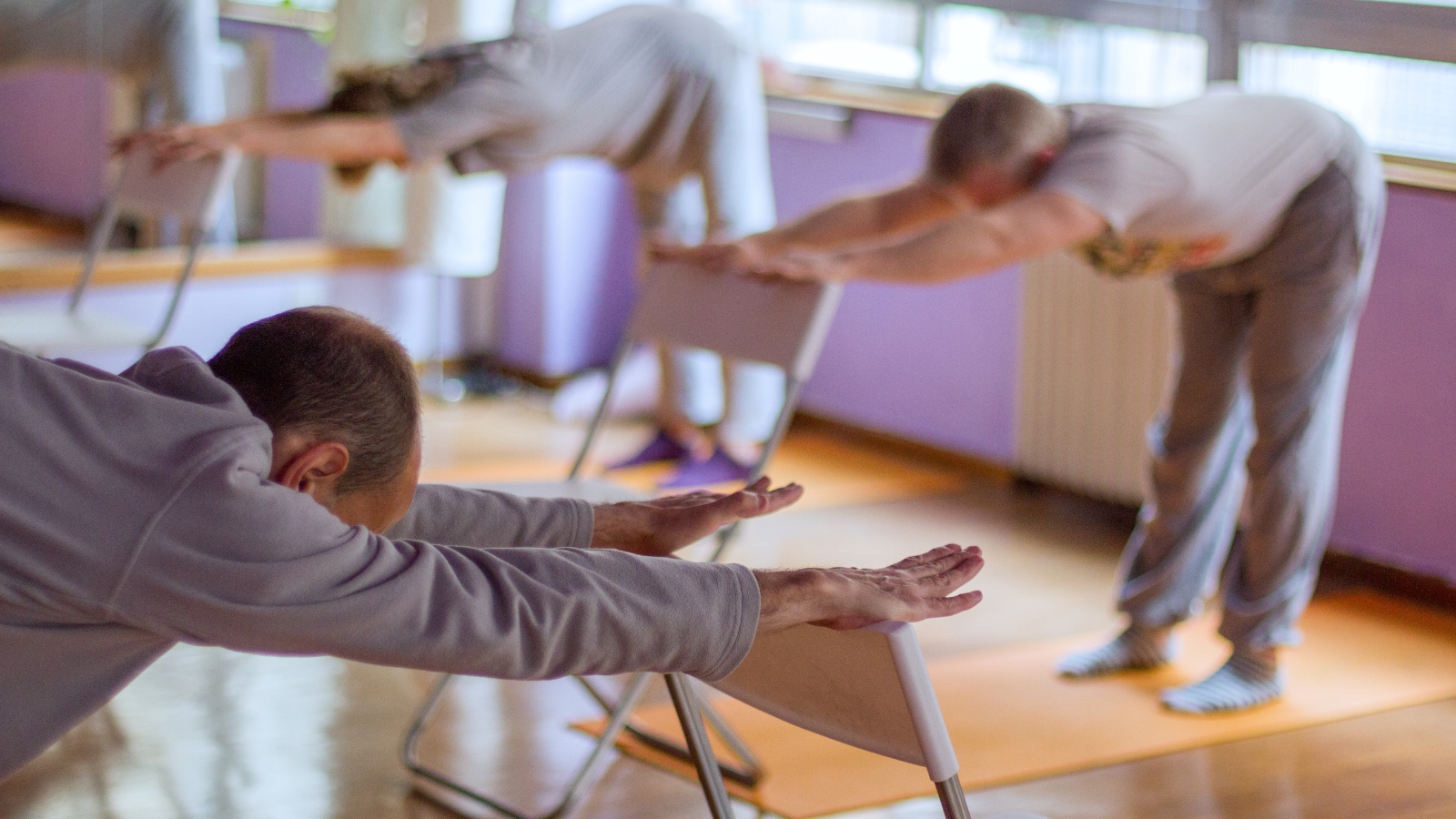
Unlike some forms of exercise which can be jarring to sensitive joints, gentle forms of yoga are both safe and beneficial for arthritis sufferers. Studies of yoga for individuals with rheumatoid arthritis and osteoarthritis reported that none of the participants experienced any worsening of joint symptoms or joint injuries. Yoga, therefore, appears to be a safe, feasible, and enjoyable form of exercise for people with arthritis. Just as important, yoga also offers valuable mental health benefits for people who practice regularly.
How to Find a Yoga Teacher
Ready to get started? I recommend seeking out gentle, slower forms of yoga, such as a beginner or chair yoga class. Look for an experienced teacher or yoga therapist who has worked with people with arthritis. Be sure to let the instructor know that you have arthritis and ask for suggestions on how to modify the practice to protect your joints and avoid injury. If your instructor is aware of your personal needs, he or she will be better equipped to provide specific guidance and suggestions for modifying the practice for your body. And of course, speak with your doctor or rheumatologist before starting a new exercise routine.
Reprinted with permission from WisdomTreeYoga.com

Beverly Davis-Baird, MA, C-IAYT is a New Jersey-based yoga therapist, writer, and educator. She specializes in making yoga accessible for adults 50+, offering classes and workshops for back care, arthritis, bone health, balance, posture, and healthy aging. An educator at heart with over 20 years of experience as a public school teacher, Beverly brings her knowledge of individual learning styles to her classes, providing instruction that is clear, concise, inclusive, and compassionate. Bringing over 30 years of experience and training, she considers herself a lifelong learner and believes that the practice of yoga should bring spaciousness and release from tension, not create it. As such, she strives to make yoga accessible to people of differing abilities, believing the real benefits of yoga come from what is taken with you outside of class and into your life. To read her blog or learn more about her teaching schedule and latest offerings, please visit www.wisdomtreeyoga.com.
Featured Courses









